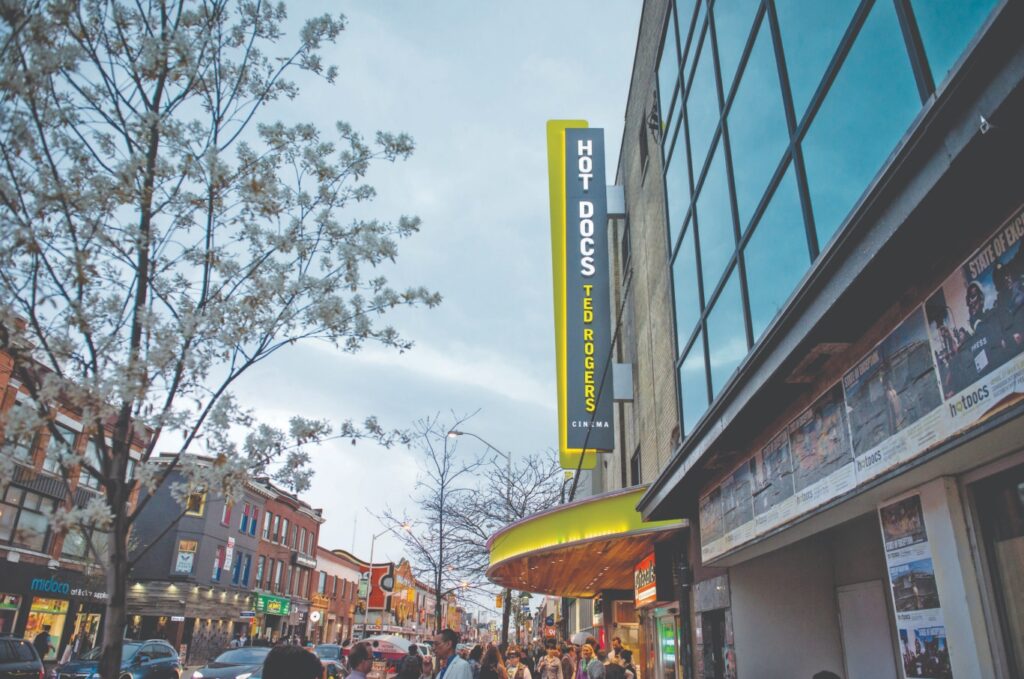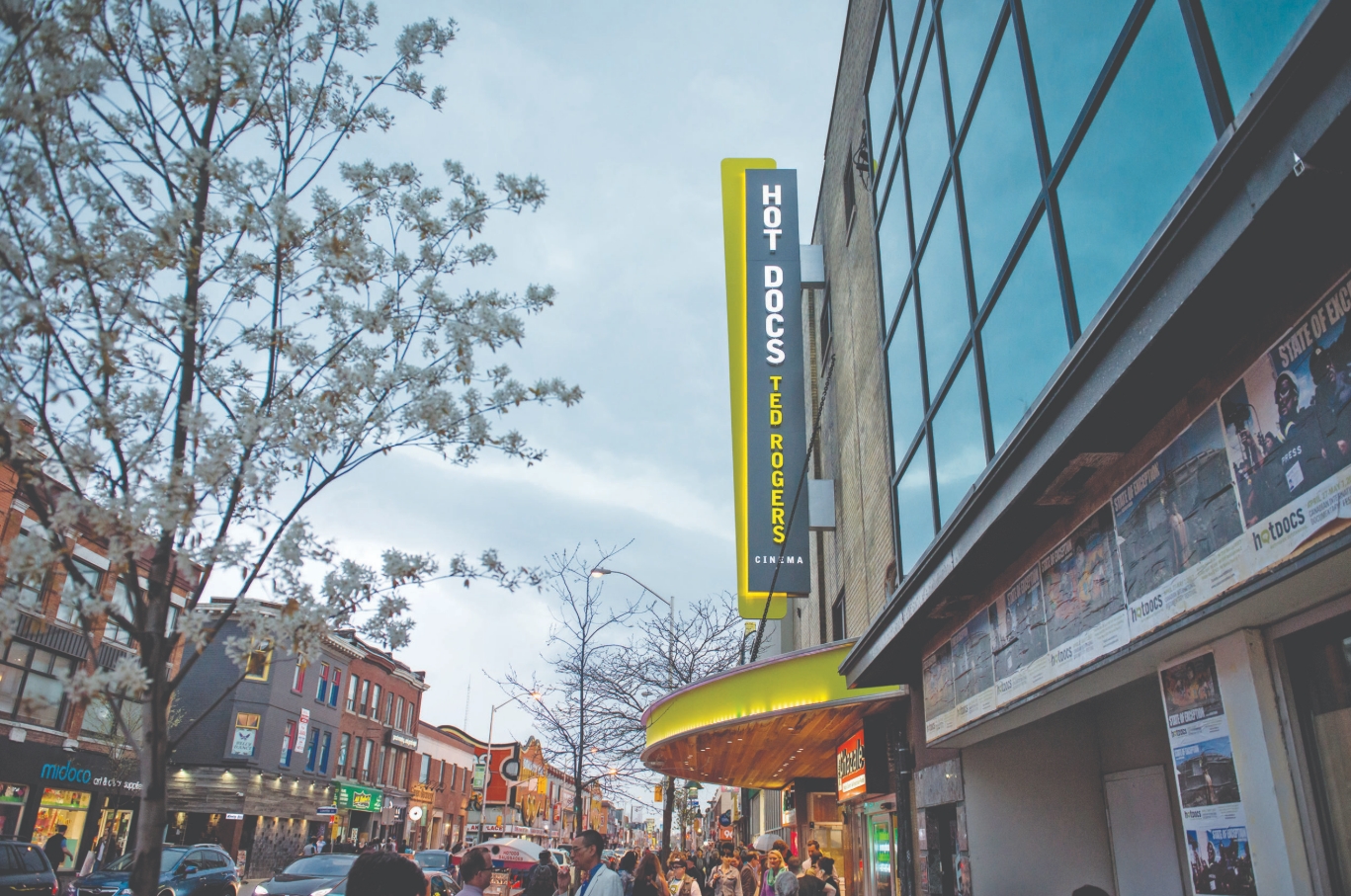
HOT DOCS TURNS 25
By Jordan Adler
The adage goes that truth is stranger than fiction. It’s a phrase that can be applied to the programmers and organizers of the Hot Docs Canadian International Documentary Festival, who have been responsible for showcasing some of the most insightful and idiosyncratic films of the past two decades.
Diverse Programming
At the 2017 festival, one could find titles ranging from a behind-the-scenes look at Japan’s obsessive ramen chefs (Ramen Heads) to an intimate dive into the growing “mermaiding” subculture (Mermaids) to the riveting tale of citizen journalists risking their lives in present-day Syria (City of Ghosts).
North America’s Largest Non-fiction Film Festival
But one of the strangest stories of all may be Hot Docs’ own unlikely ascent over 25 years. From a small gathering of Canadian documentarians hoping to watch each other’s work, to North America’s largest non-fiction film festival, now drawing more than 200,000 visitors annually. The Toronto-based event, which runs from April 26th to May 6th, is the rare occasion where documentary films get their moment in the spotlight.
“The natural appetite that people have to want to explore the world around them and understand people’s lives; I feel that appetite has always been there,” says Brett Hendrie, the Executive Director of Hot Docs. “[But] more people are watching documentaries now than ever before. They’re on the shelf in a way that they weren’t 25 years ago…They really weren’t available at Blockbuster or in commercial cinemas. Now, the landscape has changed so much.”
Hot Docs’ Early Days
Back in 1994, the volume surrounding the festival was little more than a whisper. Launched during a time when the medium for most documentary viewing was television, Hot Docs’ original ethos was to be a space for Canada’s documentarians to screen their newest work and discuss ways to attain funding, resources and creative control. It was a supportive, if grassroots, endeavour meant to be a platform and meeting ground for Canadian filmmakers.
The first festival took place over four days in February 1994, organized by members from the Canadian Independent Film Caucus. (Director Paul Jay, the founding chair of Hot Docs, has also been credited with giving the festival its punchy name.) Eighteen films were screened—all Canadian, many with a socially-conscious or activist bent, setting up the repertoire for the rest of the decade, with an emphasis on locally-made, point-of-view (POV) documentaries. Through the rest of the 1990s, the state of Canadian documentary production surged, as did the narrative and creative possibilities for these independent, non-fiction projects. Hendrie says he also considers those POV selections to be a staple of Hot Docs today.
Rise to international Recognition
It wasn’t until 1999 that Hot Docs transitioned into a public festival. Back then, the turn-out was still modest. Hendrie says that when he joined the organization in 2001 as a box office manager, the total audience was between 10,000 and 15,000 people over a week at Toronto’s Royal Cinema. Shortly after, to ensure that filmmakers travelling from far distances didn’t play their films to an empty house, Hot Docs organizers decided on an initiative that still stands: providing free daytime screenings for seniors and students. “It really helps the experience for the filmmakers who want a full house of people to respond to their documentaries,” Hendrie says.
Marketplace for Documentary Filmmakers
As Hot Docs grew in popularity, its role has gone beyond serving just an audience. In its second year, the Hot Docs Market was established, hoping to connect creative professionals and help filmmakers assemble funding and resources for future projects. This marketplace continues to be one of the main factors that draws industry giants and aspiring creators to Toronto every spring. Today, the festival includes a “forum” where pre-selected teams of filmmakers and producers pitch their work to a room of executives, financiers and sales agents.
Hot Docs 25th Anniversary Festival
The forum at this spring’s 25th anniversary festival will feature industry giants from 11 countries. As for the programming, one should expect to see a retrospective of hidden treasures and beloved classics that have screened at Hot Docs during the past quarter century. There will also be a spotlight on bold, new documentaries from Mexico, as well as retrospectives of legends like two-time Oscar-winner Barbara Kopple (Harlan County, USA) and acclaimed Canadian director John Walker (Quebec My Country Mon Pays).
Hendrie says that beyond these special screenings, this year’s programming should be zeitgeist-defining. The shift in the cultural consciousness because of the #MeToo movement should bring special attention to films that reflect this moment. It helps to have a festival that has foregrounded the efforts of women directors in the programming; these creators have helmed nearly 50 percent of all Hot Docs premieres over the past four years. “[The #MeToo movement] will definitely be visible in this program,” Hendrie says. “In many ways, they are the issues that documentary filmmakers have been focusing on for a long time.”
The Documentary Renaissance
With a growing audience base at Hot Docs, and with streaming platforms and on-demand services boasting a broad slate of non-fiction, one could say that documentaries are experiencing a renaissance. When the Academy Award nominations were announced, three of the five nominees in the documentary feature category could be accessed via Netflix Canada. Nevertheless, despite the emergence of many great Canadian works at the festival—where national productions make up around one of every four Hot Docs selections—the state of documentary filmmaking in this country is precarious.
“There’s a paradox right now in that the genre is probably as popular as ever…but despite all these new places for the films to be seen, the industry is going through a state of disruption,” Hendrie says. “A lot of the landscape has become increasingly treacherous for producers to navigate. In Canada, there’s not a deep heritage of philanthropic or foundation support for documentary films, which is very different from the [United States]. But there’s a great alignment between the stories that Canadian documentary filmmakers want to tell—social justice, human rights, the environment, arts and culture—and what Canadians want to [see].”
Vital to the Canadian Arts Landscape
Despite these challenges, the festival continues to make its mark in Toronto’s film scene. Even though doc fans have a plethora of viewing options available, the programmers are primed to deliver a well-curated slate of films that deserve attention and can drive the cultural conversation. It helps to have around 3,000 submissions from which to choose, ensuring that the 200 or so selected titles are the cream of the crop.
It also helps that the presence of the documentarians, and often the subjects of their films, have led to unforgettable post-screening interactions. “When you’re watching documentary films, the story that you’re watching isn’t over at the end of the film,” Hendrie says. “That story continues with the screening…and the chance for audiences to have those conversations.”
Hot Docs runs April 26 to May 6, 2018.
www.hotdocs.ca

